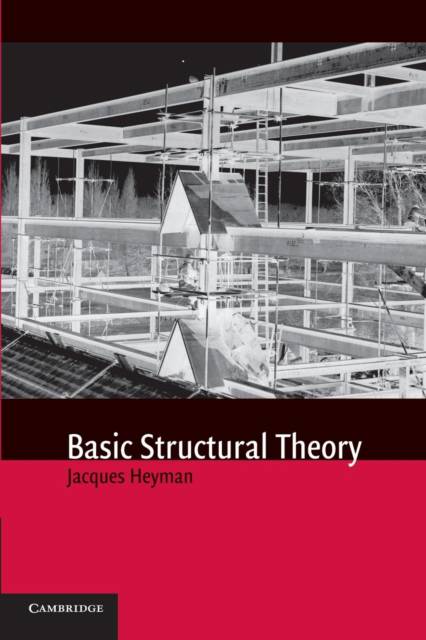
- Afhalen na 1 uur in een winkel met voorraad
- Gratis thuislevering in België vanaf € 30
- Ruim aanbod met 7 miljoen producten
- Afhalen na 1 uur in een winkel met voorraad
- Gratis thuislevering in België vanaf € 30
- Ruim aanbod met 7 miljoen producten
Zoeken
Omschrijving
This text introduces the basic equations of the theory of structures. Conventional presentations of these equations follow the ideas of elastic analysis, introduced nearly two hundred years ago. The present book is written against the background of advances made in structural theory during the last fifty years, notably by the introduction of so-called plastic theory. Tests on real structures in the twentieth century revealed that structural states predicted by elastic analysis cannot in fact be observed in practice, whereas plastic ideas can be used to give accurate estimates of strength. Strength is discussed in the first part of this book without reference to equations of elastic deformation. However, the designer is concerned also with stiffness, for which elastic analysis is needed, and the standard equations (suitable, for example, for computer programming) are presented. Finally, stability is analyzed, which again is essentially an elastic phenomenon, and it is shown that a higher "factor of safety" is required to guard against buckling than that required to guarantee straightforward strength. The emphasis throughout is on the derivation and application of the structural equations, rather than on details of their solution (nowadays best done by computer), and the numerical examples are deliberately kept simple.
Specificaties
Betrokkenen
- Auteur(s):
- Uitgeverij:
Inhoud
- Aantal bladzijden:
- 150
- Taal:
- Engels
Eigenschappen
- Productcode (EAN):
- 9781107427273
- Verschijningsdatum:
- 17/07/2014
- Uitvoering:
- Paperback
- Formaat:
- Trade paperback (VS)
- Afmetingen:
- 152 mm x 229 mm
- Gewicht:
- 208 g

Alleen bij Standaard Boekhandel
+ 253 punten op je klantenkaart van Standaard Boekhandel
Beoordelingen
We publiceren alleen reviews die voldoen aan de voorwaarden voor reviews. Bekijk onze voorwaarden voor reviews.








